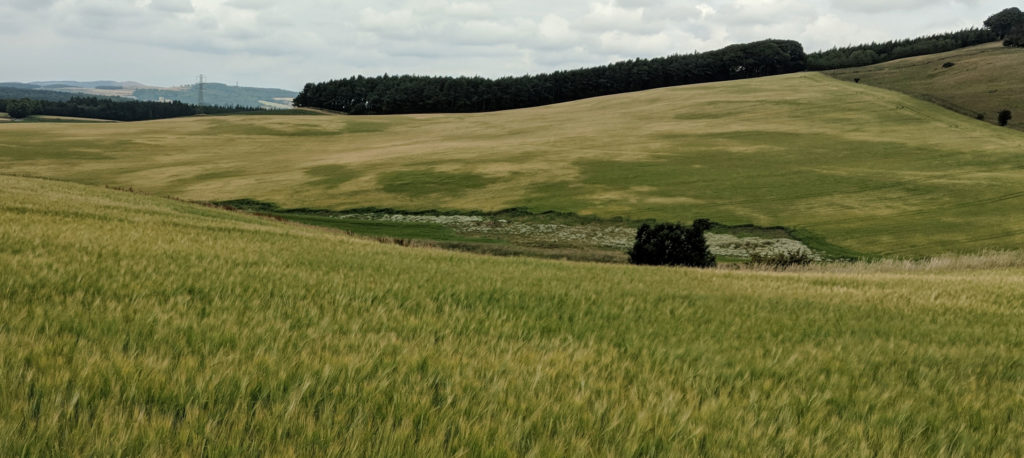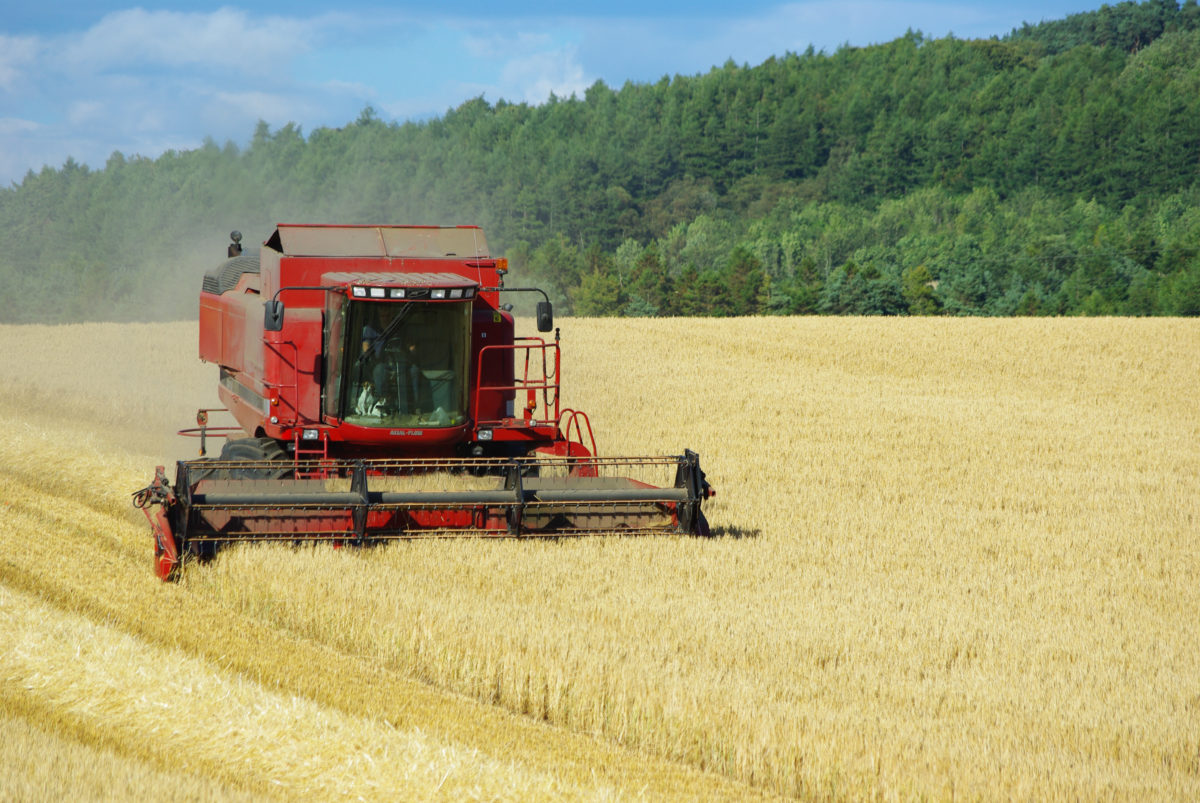In the depths of the snow back in March this year, who would have thought it that we would be starting harvest on the 22nd of July? The above picture shows the combine working in our first field of winter barley in glorious sunshine – so hot in fact that after taking the photo it was a relief to get back in the tractor to the air conditioned cab.
This season has without doubt been the weirdest one I have experienced in my 35 odd years of being a farmer. In an earlier post I put up a table showing that this spring was the latest one in that time. Although we have started harvest earlier than this (but not by much), the interesting fact will be to see when we start harvesting spring barley. At the moment I think it will be early August, which will mean (after the late spring) the growing season has been very short indeed.
The Weather
After a cool wet spring we have had a prolonged dry spell. I wrote last time (2nd June) that we had the longest dry spell that I’d recorded on the weather station (20 days), and we have also recorded the highest apparent temperature of 30.9C on 28th June. There has been some rain, but not enough – 53.2mm, the wettest day being the 14th of June with 14.8mm. Another 8.8mm of that total fell last night. The rain has come in lumps rather than spread evenly.
So how have these extremes of weather affected the crops? Cults Farm is on the side of a hill, with light sandy soil down the bottom, gradually changing to quite heavy clays up the top. Sandy soils let water pass through them, so crops have suffered with the heat and drought. Clay soils will hold water much better, so the crops are coping reasonably well on these soils.
The following picture starkly illustrates the problem on the lighter soils:

The area of white flowers near the bottom is an area where we could not drill a crop in the spring because the soil was too wet. As you move up the picture, you see light patches and dark green patches. The lighter patches are where the crop has run out of water, and is literally dying on its feet. The green patches are where the soil has managed to hold on to water better, and so the crop is still managing to grow.
Impact on Yields
This is very hard to predict, as generally speaking Cults Farm does better than you think it will in a dry year, and not as good as you think in a wetter one. The one thing that it is having a severe impact on is the amount of straw. The straw is very short this year, and so there will not be a lot of it. The shortage of straw is exacerbated by a poor crop last year, so prices have gone through the roof.
Wild Oats
Wild oats are a grass weed, and a very prolific one when they get established. If you have one plant in year 1, then in year 2 there will be 5 – 10, year 3 there will 50 – 100, and so on. They are an annual, which means they grow from seed every year.

They are an expensive weed to control using chemical sprays, because you are trying to control a grass weed in a cereal crop (which is a grass), so as long as you catch then early enough, the most cost effective method of control is roguing. This is where you walk through the crop and you pull them out, and carry them off in a bag for disposal. They are quite easy to spot, as they usually sit well above the crop (see photo), but if you see 1, you can guarantee there will be at least 5 that are smaller and just below the level of the crop, so care must be taken.
Having teenagers who need to earn some money is an advantage, as there is usually a ready supply of roguers. Add in a good summer like this one, and what better way to spend a Friday evening with the family than out roguing for wild oats? 🙂

These photos were taken on a warm Friday evening where we were all out for a couple of hours. An ice cold beer has never tasted so good!

Grain Dryer Progress
Way back in December preparations were started to put in new elevators and conveyors for the grain dryer. The idea was that if we started in plenty time, then everything would be in place well before the start of harvest. Unfortunately things haven’t quite worked out that way.
Again, the weather has played an important part. We effectively lost March due to the snow. April, May and June were drier than normal, which meant that a lot of farmers in our area were irrigating their vegetable crops. This put an unprecedented demand on Sellars to keep these irrigators working, and couple that with being short staffed means not much happened with the grain dryer until the beginning of July.
July is the holiday time, so since the 16th of July there has been a bit of a rush to get things up. I would imagine things should be up and running within the next week to ten days, but there is still quite a bit of work to be done as I write today. Once the engineers have finished, we have to get electricians in, and also joiners to put in new flooring in certain areas.
Harvest Update
Harvest started on 22nd July as I have said earlier. The crop was reasonable considering the dry weather, and just as importantly it was fairly dry. At about 16% moisture content it will keep in the shed for a considerable time, so thankfully we are not feeling the loss of the grain dryer too much yet.
There was only 1 field ready, the next two will probably be ready by the end of this week. Then we will have a short break before starting on the spring barley, probably the week after.

